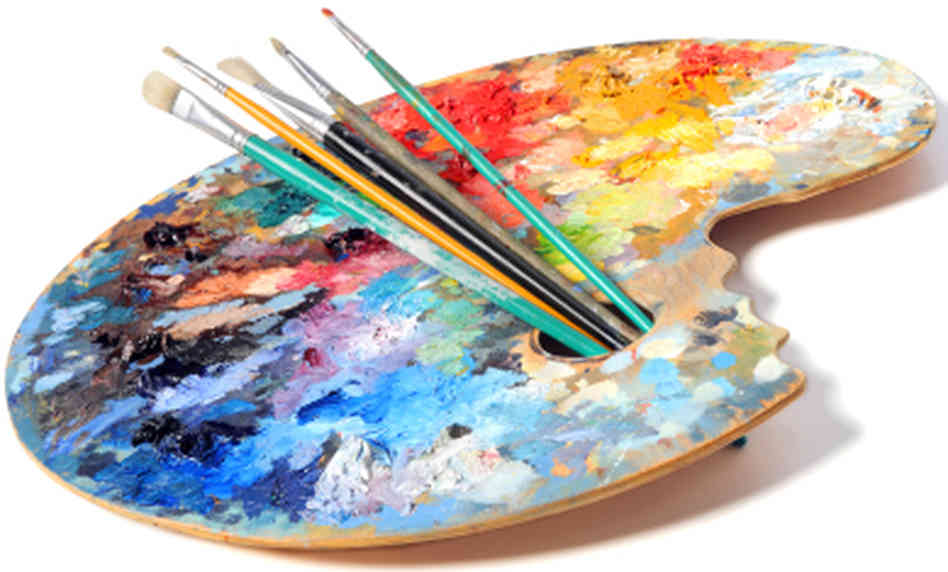Introducing the Most Provocative Trump Art Parts of the Years
Introducing the Most Provocative Trump Art Parts of the Years
Blog Article
Looking Into the Diverse World of Artistic Expression: From Surrealism to Abstract Realism
In the realm of creative expression, from the dreamlike landscapes of surrealism to the intricate play of light and type in abstract realism, artists have continually pressed the borders of creativity and creative imagination. As we discover the multifaceted world of art, we are offered with a tapestry of styles, methods, and viewpoints that test our understanding and prompt reflection.
Surrealism: Unleashing the Subconscious
Surrealism, an avant-garde imaginative motion of the 20th century, looked into the depths of the subconscious, unveiling a world of dream-like imagery and unusual juxtapositions. Spearheaded by artists like Salvador Dali, René Magritte, and Joan Miró, Surrealism looked for to test the traditional methods of seeing and comprehending art. Through methods such as automatism and dream analysis, Surrealist musicians intended to tap into the subconscious mind to reveal surprise truths and needs.
Among the crucial elements of Surrealism was the emphasis on the irrational and the incredible. By combining unanticipated elements in their works, Surrealist musicians intended to produce a feeling of disorientation and surprise in the customer. This interruption of logic and reason was meant to prompt a much deeper expedition of the subconscious and the mysteries of the human mind.
Abstract Realistic Look: Redefining Perception
Testing traditional artistic borders, Abstract Realism redefines understanding via the fusion of identifiable aspects with abstract kinds. This cutting-edge strategy to art integrates the representational accuracy of realistic look with the creative flexibility of abstraction, offering customers a distinct aesthetic experience that triggers them to question their perception of truth.
In Abstract Realistic look, artists strive to catch the significance of their topics while likewise instilling their collaborate with a sense of deepness and intricacy through abstract components. By blending the acquainted with the unknown, these musicians welcome target markets to engage with their items on numerous levels, urging them to explore the nuances of color, texture, and type.

Cubism: Fragmentising Reality
Using geometric kinds and fragmented viewpoints, Cubism transformed the creative representation of reality in the early 20th century. Developed by Pablo Picasso and Georges Braque, Cubism looked for to challenge standard ideas of perspective and representation. By damaging down items and numbers right into geometric shapes and offering them from several viewpoints at the same time, Cubist musicians aimed to record the significance of the subject rather than its actual look. This technique not only deconstructed truth but also highlighted the flatness of the canvas, leading the way for future abstract art activities.

Cubism can be categorized into two main phases: Analytical Cubism, characterized by single color design and complex, fragmented forms; and Artificial Cubism, which integrated collage elements and brighter colors into the make-ups. Via these distinctive phases, Cubism affected not only painting yet additionally architecture, design, and sculpture. trump art. Its impact resounded across the art world, motivating musicians to explore brand-new means of representing the world and translating around them
Expressionism: Emotions on Canvas
Exploring the depths of human feelings through dazzling and expressive brushstrokes, Expressionism became an extensive imaginative movement in the very early 20th century. Unlike previous art activities that concentrated on depicting the outside globe, Expressionism dug into the internal realm of the musician's mind, aiming to evoke see here now raw emotions and prompt visceral reactions from audiences.
Expressionist musicians, such as Edvard Munch, Egon Schiele, and Emil Nolde, rejected conventional concepts of charm and realistic look in favor of distorting type and color to share subjective feelings. Using overstated brushwork, vibrant colors, and distorted figures helped develop a sense of unease, alienation, or interest in their works.
One of the most well-known examples of Expressionism is Munch's "The Scream," which catches the intense anxiousness and anguish of contemporary life through its swirling, distorted number against a blood-red skies. Via their mentally charged works, Expressionist artists looked for to challenge traditional imaginative norms and provide a home window into the stormy midsts of the human spirit.
Contemporary Art: Progressing Viewpoints

Among the specifying characteristics of contemporary art is its consistent development and ability to adapt to transforming cultural landscapes. Musicians are increasingly incorporating innovation into their technique, blurring the lines in between the physical and digital realms. This combination of mediums enables innovative ways of storytelling and involving with target markets in an extra interactive way.
Additionally, modern art often works as a platform for social commentary, dealing with pushing problems such as identity, national politics, and the setting. Artists are utilizing their work to prompt and trigger important discussions thought, clarifying the intricacies of the world we reside in. As point of views remain to advance, contemporary art continues to be a prominent and dynamic force in shaping our cultural landscape.
Verdict
Finally, the world of artistic expression encompasses a wide variety of designs and motions, each with its own distinct method to communicating meaning and feeling. From surrealism's exploration of the subconscious to abstract realism's redefining of perception, and from cubism's fragmentation of truth to expressionism's portrayal of emotions, art continues to develop and challenge point of views - trump art. Contemporary art reflects the ever-changing world visit the site we reside in, using new methods to analyze and understand the complexities of our fact
As we discover the multifaceted world of art, we are offered with a tapestry of styles, methods, and viewpoints that challenge our understanding and provoke reflection. Its effect reverberated across the art globe, motivating artists to discover brand-new means of translating and standing for the globe around them.

Report this page